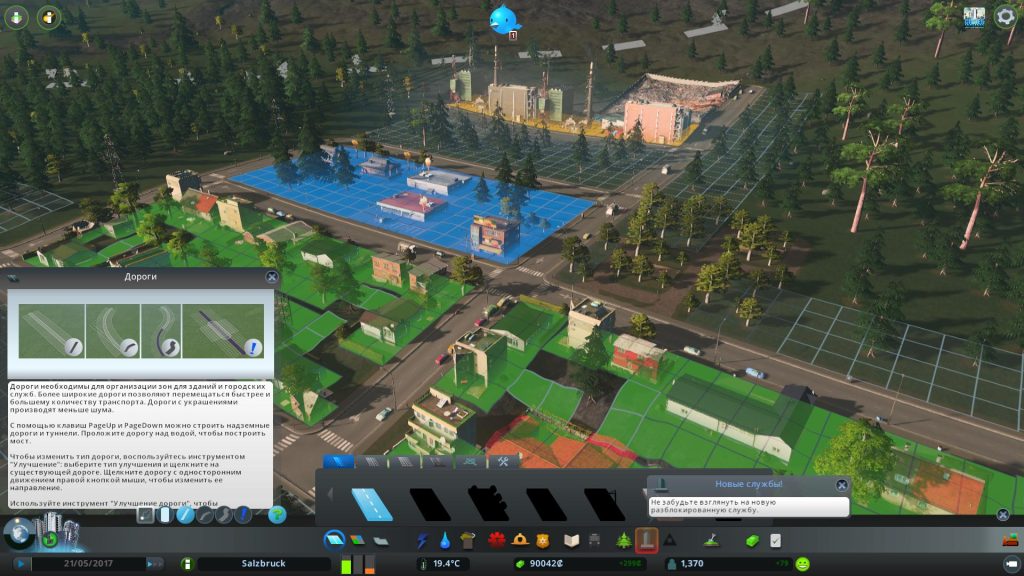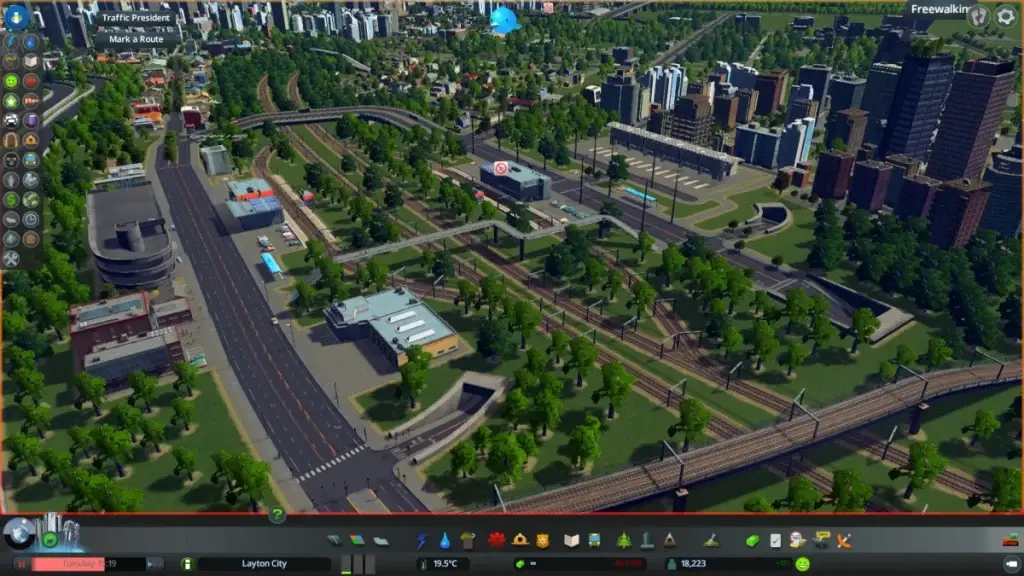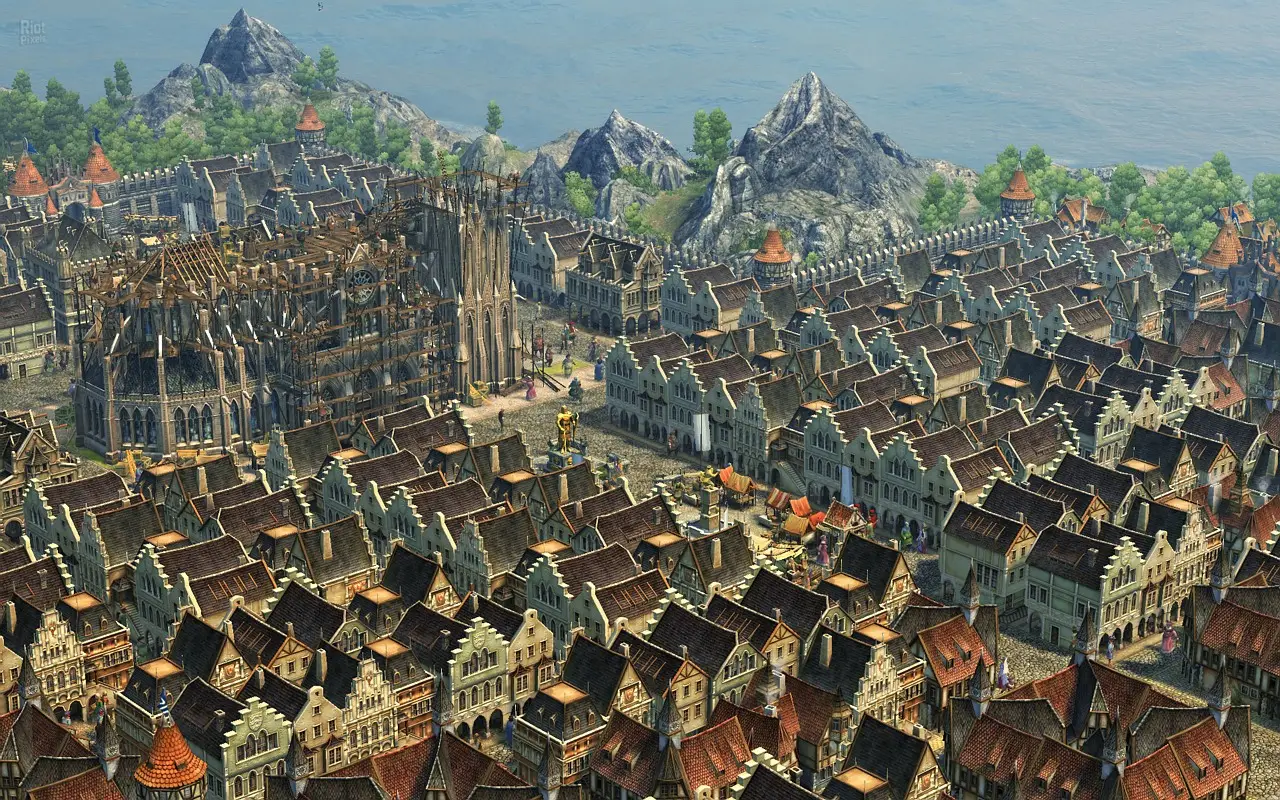Games in the genre of urban planning simulators have always attracted the attention of fans of strategy and architectural planning. The developers from Colossal Order and the publisher Paradox Interactive continue to develop this concept, creating Cities: Skylines 3 – the most ambitious and technologically advanced part of the series.
The continuation of the popular project offers advanced construction mechanics, improved simulation of urban infrastructure and new management tools. Unlike previous parts, the third release focuses on environmental issues, a deeper economic system and advanced customization options. How Cities: Skylines 3 develops the ideas of its predecessors, what innovations have been introduced, and whether we can expect a breakthrough in the genre — a detailed analysis will reveal all the important aspects.
The main innovations of the Cities: Skylines 3 simulator
The developers of Colossal Order promise global changes that affect gameplay and the depth of simulation. Key features include:
- A realistic economy. The city’s budget now depends not only on taxes but also on investments, trade, infrastructure development, and external economic factors.
- Advanced transport management. The new traffic system takes into account traffic density, accidents, public transport, and even pedestrian behavior.
- Weather conditions and their impact. Rain, snowfall, heat, and storms are now having a real impact on the city’s life.
- In-depth study of zoning. Unlike previous parts, each zone (residential, commercial, industrial, and business districts) now has more detailed parameters, including pollution levels, transportation accessibility, and population standards of living.
- Social policy and ecology. Citizens are now more actively responding to the mayor’s decisions, participating in city elections, and demanding sustainable development of the metropolis.
Gameplay: How much more difficult and interesting it is to manage a city
 The gameplay structure is based on the gradual development of a settlement, from a small village to a huge metropolis. Cities: Skylines now requires players to consider various factors that affect the growth and stability of a city. The developers have redesigned the interface and control mechanics, making the gameplay more user-friendly.
The gameplay structure is based on the gradual development of a settlement, from a small village to a huge metropolis. Cities: Skylines now requires players to consider various factors that affect the growth and stability of a city. The developers have redesigned the interface and control mechanics, making the gameplay more user-friendly.
Key controls:
- Infrastructure development involves the proper design of roads, transportation hubs, pedestrian zones, and parks.
- Energy and utilities are a balance between traditional energy sources and renewable resources.
- Housing and commercial real estate are aimed at creating a comfortable environment for citizens and developing the business sector.
- The transportation network includes public transportation, bike lanes, highways, and railway lines.
Comparing Cities: Skylines 3 and SimCity: What are the key differences?
Urban planning simulators have always been of great interest to players who enjoy strategic planning and economic management. The development of the genre has led to the creation of numerous projects, but Cities: Skylines and SimCity remain the two most significant series that have set the standards for the entire industry. Cities: Skylines 3 continues the concept, while projects under the second brand have gradually faded into the background since the controversial release in 2013.

SimCity initially offered a city-building system based on clearly defined rules, zoning restrictions, and rigid resource management mechanics. The gameplay revolved around simple algorithms that simulated urban development, focusing on visual appeal and user-friendliness. In contrast, Cities: Skylines 3 offers unlimited customization options, a more flexible economic system, and enhanced control over transportation hubs. The developers at Colossal Order have implemented an advanced technology where each resident has an individual route, work schedule, needs, and reactions to changes in the infrastructure.
The development of transport logistics has become one of the main factors that distinguish Cities: Skylines 3 from older parts of the SimCity simulator. In Electronic Arts’ projects, the movement routes of citizens were rigidly scripted, which often led to unnatural behavior of the population. For example, residents could move endlessly on the same roads, creating artificial traffic jams and leading to illogical collapses of the road network. In CS 3, the transportation system uses a realistic flow calculation algorithm, where each vehicle, pedestrian, or bus passenger takes into account the actual road conditions, chooses the optimal routes, and reacts to changes in traffic.

Another key difference between the two concepts is the feedback from the residents. In SimCity, the interaction with the population was limited to simple complaint or request windows, which provided only a superficial understanding of the city’s needs. However, in the new version of Cities: Skylines 3, the behavior of citizens dynamically changes based on the decisions made, the standard of living, tax policies, and the quality of the city’s infrastructure.
The financial model of the game has also undergone significant changes. While SimCity was based on a rigid tax management system, where basic parameters were adjusted through simple rate settings, Cities: Skylines 3 features a complex revenue and expenditure system that includes a city budget, investment projects, subsidies, taxation of individual districts, and commercial rentals.
Another important difference is the freedom of urban planning. In Electronic Arts projects, zoning has always been the primary tool for development, which limited the creativity of players. However, CS 3 introduces a detailed construction system that allows players to manually create roads, place buildings in unconventional locations, combine territories into unique zones, and even design individual neighborhoods with their own economies.
Player reviews and prospects of the series
Since the release of the first materials about the Cities: Skylines 3 simulator, interest in the project has increased significantly. Players who have followed the series have noted the depth of the innovations, the improved graphics, and the expanded mechanics that make the game the most realistic in the history of the genre.
Based on the reactions of the community, the concept has the potential to become a benchmark for urban planning simulations. The improved economic system, detailed city life simulation, and new management mechanics make the project unique in the industry. Thanks to these innovations, Cities: Skylines 3 is firmly established on the list of the most anticipated strategy games of 2025.
System Requirements and Availability of the Cities: Skylines 3 Simulator
A powerful PC is required for full-fledged gameplay at high settings. Paradox Interactive developers have confirmed that the game will support an updated graphics engine, providing more realistic textures and complex object physics.
Minimum requirements:
- Processor: 6th generation Intel Core i5 or AMD Ryzen 3.
- RAM: 8 GB.
- Video card: NVIDIA GTX 970 / AMD Radeon RX 570.
- Storage: 50 GB.
Recommended requirements:
- Processor: Intel Core i7 / AMD Ryzen 5.
- RAM: 16 GB.
- Graphics card: NVIDIA RTX 3060 / AMD Radeon RX 6700 XT.
- Storage: SSD, 50 GB.
Cities: Skylines 3 will be available on Steam, the Epic Games Store, and the Microsoft Store.
Conclusion
 The Cities: Skylines 3 city-building simulator offers deep gameplay, realistic city life projection, and an improved economic system. The game is an ideal choice for those who enjoy comprehensive city management and complex strategies.
The Cities: Skylines 3 city-building simulator offers deep gameplay, realistic city life projection, and an improved economic system. The game is an ideal choice for those who enjoy comprehensive city management and complex strategies.
 en
en  ru
ru  de
de  ar
ar  es
es  hi
hi  fr
fr  nl
nl  it
it  pt
pt  el
el 



